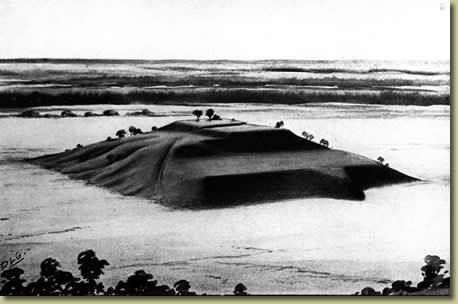Dear Myrna,
Thanks once again for this wonderful forum. I have just read your post about the Native Americans, their nations and tribes, and their distribution over the Eastern ?xml:namespace prefix = st1 ns = "urn:schemas-microsoft-com:office:smarttags" /territory of North America. On top of fascinating, your post is highly informative and didactic and really makes an interesting reading. The posts by Phil and Alain, among others, are also very good.
While I have not been able to absorb a great deal of material in the last few weeks, what little I have so far reaffirms my belief that it is respect of tradition alone which enables cultures to survive all sorts of calamities over the centuries and ages; and that it is only those societies which have kept, against all odds, a traditional view of the world by respecting their ancestor's lore and wisdom which, so to speak, will - with the help from above - "inherit the Earth."
One of the things that have really caught my eye is the mound below and not only for its visual appeal, but also for the great similarity it has with many other ancient buildings from the most diverse cultures from both the Old and the New World. I had actually seen this kind of Native American buildings on magazines, but had no idea of their great size. The note says they were used for temples and as burial sites, but if they really were so similar to all other ancient buildings from other times and places, and built in keeping with the sacred traditional science, the uses they were intended to must have been very similar as well - in fact identical.

Thus among other possible uses these mounds could very likely be intended as temples and observatories, and most particularly as schools where such sciences as astronomy and cosmology would be taught.
One of the methods used for teaching astronomy were very small, individual circular pools filled with crystaline water were the stars from the sky could reflect themselves. In this way, at a minimal cost and simply watching an image which was multiplied at all such observatories during the clear nights, all students could follow the movements of the stars and other celestial bodies at pleasure. No need to watch television there... and far more interesting indeed!
I have not invented this; such simple devices have been proved to exist from most remote times in Mohenho Daro and Harappa in ancient India, in old Sumer in Mesopotamia, etcetera; and I have personally seen the likes of them on top of a huaca of the Lima culture (a "huaca" is a building identical to the mound above) very close to my own house in Miraflores, where I live (there are hundreds, if not thousands of huacas from different cultures in my country). These devices were not circular like the ones from Asia but square, but I am pretty sure they could not serve to any other purpose than this one.
Thank you,
Luis Miguel Goitizolo